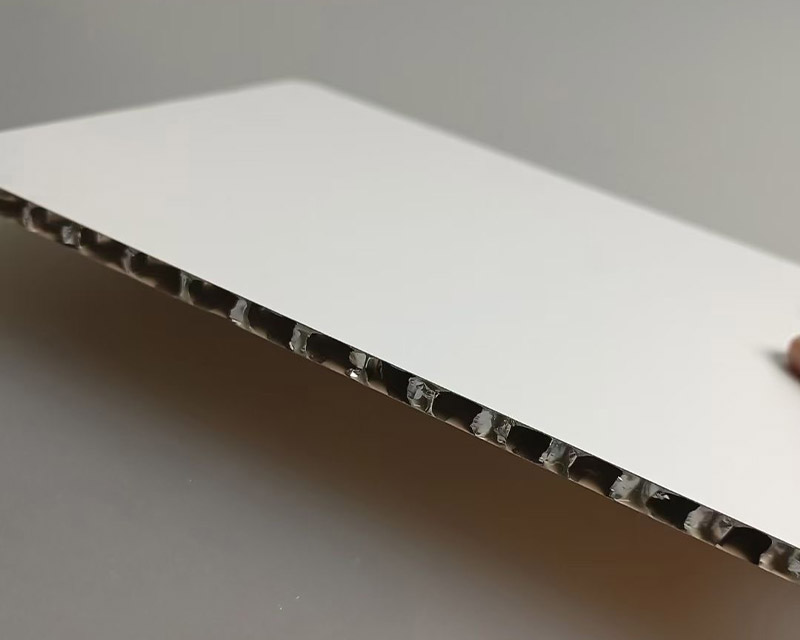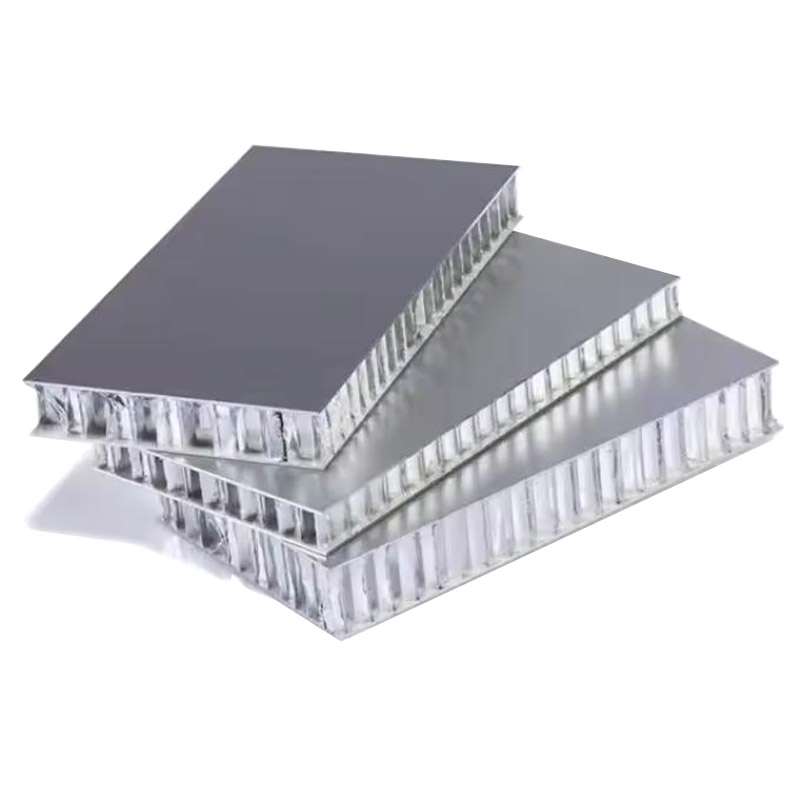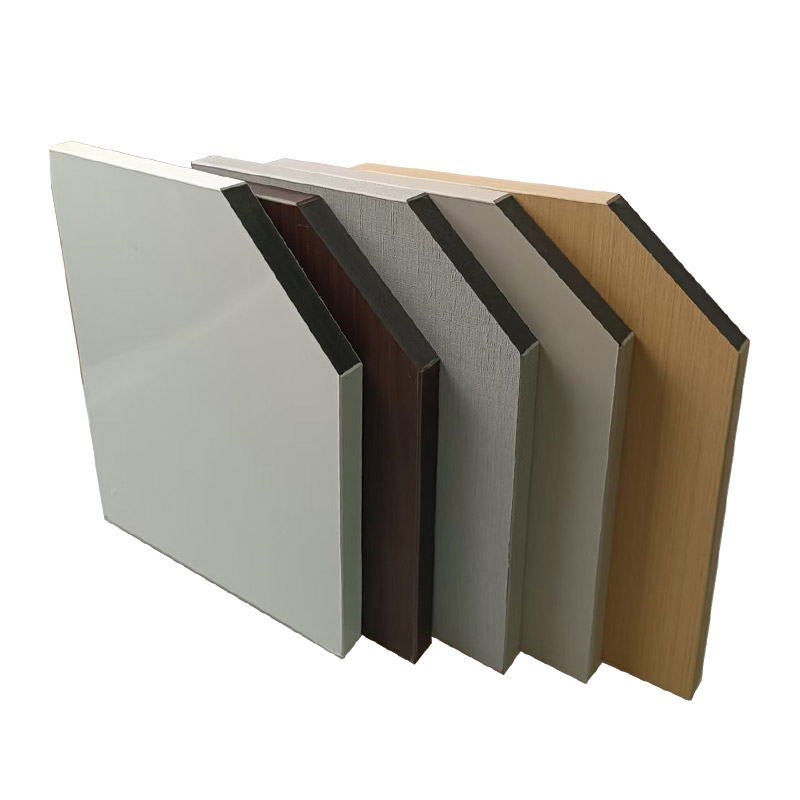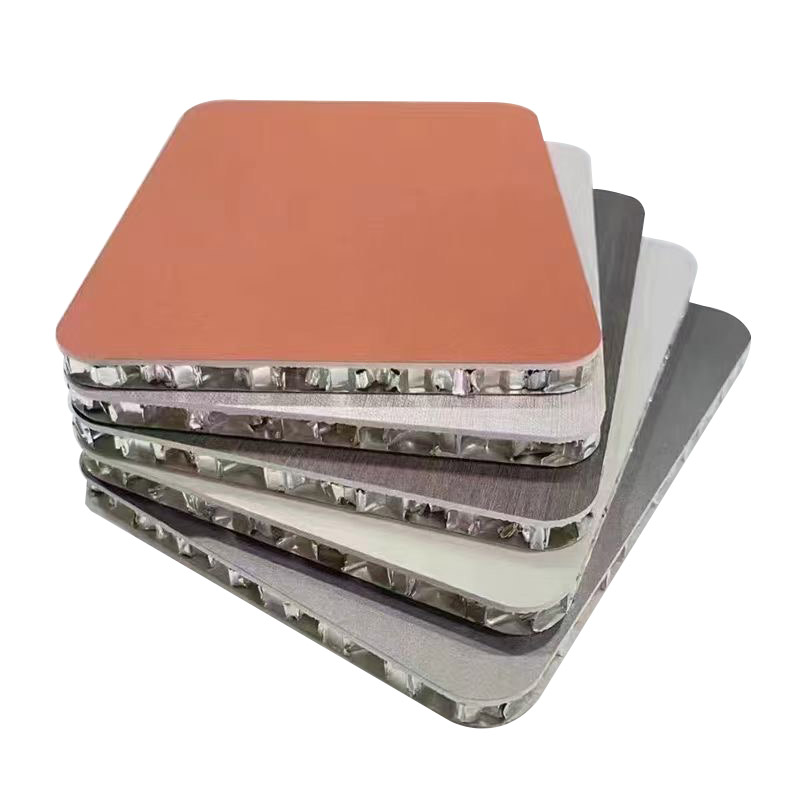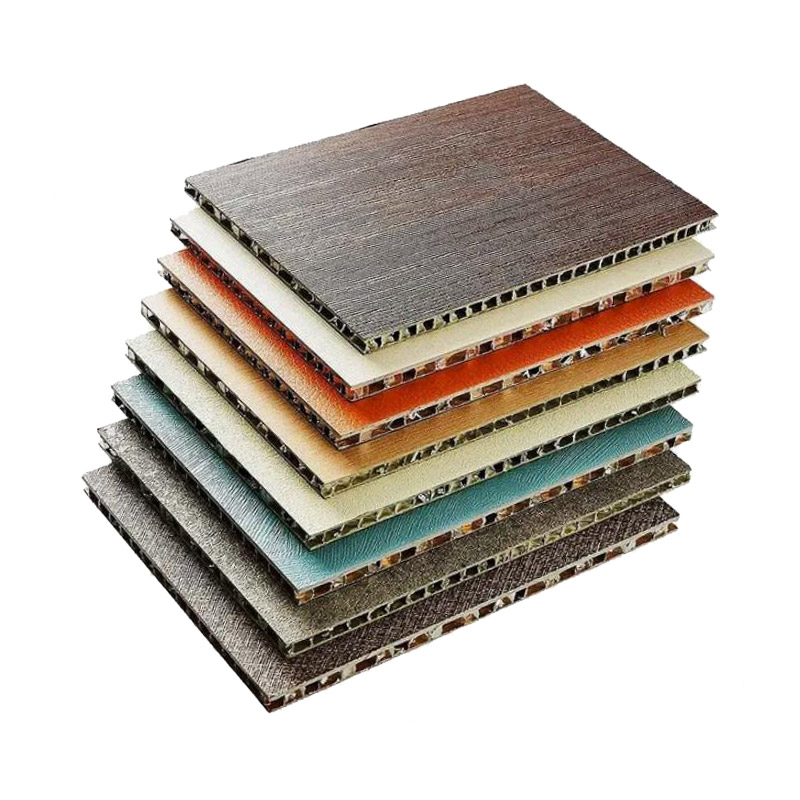How Long Can Aluminum Honeycomb Panels Last?
Aluminum honeycomb panels are extensively utilized in wall curtain, in interior decor transportation, and in other fields due to their benefits of being light in weight, strong strength and sound insulation, as well as heat insulation, and resistance to impact. In practical applications, users generally pay close attention to the core question of “What is the lifespan of aluminum honeycomb Panels?” Their service life is directly related to project cost control, frequency of later maintenance and safety in use. This article will focus on the service life of aluminum honeycomb panels, analyze the key factors affecting the service life, provide references for the average service life, and give practical tips to extend the service life, helping users make scientific decisions and use them properly.
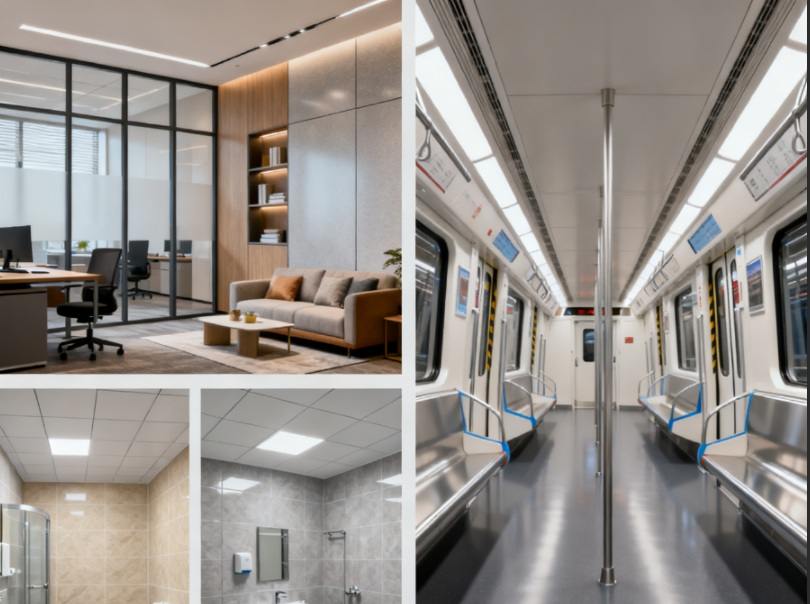
Table of Contents
Key Reasons Affecting The Lifespan of Aluminum Honeycomb Panels
Raw Material Quality–Determine the Foundation of Lifespan
Aluminum honeycomb panels that are made from high-purity aluminum (e.g. 3003 5005 series) have a high purity, minimal impurities and a strong resistance to aging and corrosion. Their life span is between 30% and 50% more than the recycled aluminum panels that contain high levels of impurities and are vulnerable to cracking and oxidation and reducing the life of the panel.
Honeycomb cores made of aluminum offer superior strength and corrosion resistance and last longer than plastic or paper cores. Paper cores absorb moisture, develop mildew and dampness Plastic cores degrade and age in the long run at extreme temperatures. Both of these affect the panel’s life span.
Eco-friendly, high-quality adhesives (e.g. epoxy resin) are strong in their bonding properties and anti-aging properties, which keep cores and panels stable for a long time. Poor adhesives can cause degumming and delamination, which can lead to premature failure of the panel.
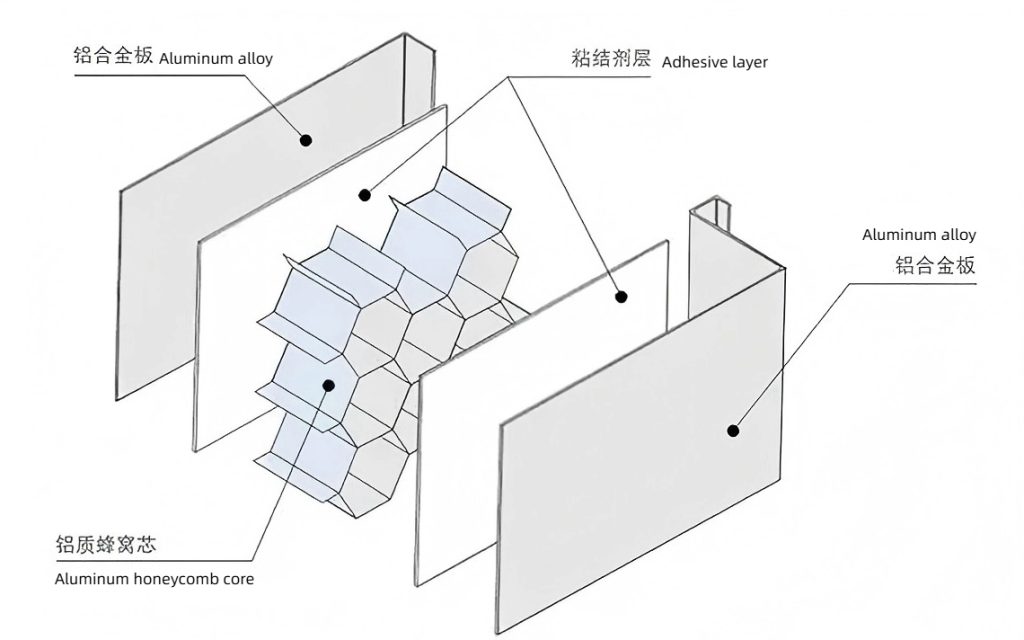
Usage Environment–Accelerate or Slow Down the Aging Process
Dry, constant temperature indoor environments with no corrosive gases (e.g. living rooms, offices) do not cause any damage to panels, but they can prolong their life considerably. In moist areas (e.g. kitchens, bathrooms) inadequate waterproofing allows water vapor infiltrate which accelerates aging and reducing time.
Outdoor panels are exposed to the elements of UV weather, wind, rain temperature fluctuations, and the coastal spray of salt. This causes coating peeling aluminum oxidation and core damage, reducing the life of a panel by 40% to 60% compared. indoor usage. Industries with corrosive gases or dust increase erosion and reduce the life of the coating.
Manufacturing Process–Affect Structural Stability and Durability
Advanced hot-pressing completely integrates panels, cores and adhesives for consistent and strong bonding, increasing the strength of the structure and anti-aging capabilities. Cold-pressing or processes that are not controlled with uniform temperature control or pressure that is not controlled properly can result in gaps and weak bonds leading to delamination and deformation over time.
The fluorocarbon coating (PVDF) offers excellent corrosion, weather, and UV resistance significantly prolonging outdoor life. Coatings made of polyester (PE) has a poor weather resistance. Long-term exposure to sunlight can cause chalking and fade that can damage the appearance and longevity. Thinly or uncoated panels are prone to oxidation and corrosion with a limited lifespan.
Installation Process–Relate to Long-Term Usage Status
Standardized installation needs base layer leveling first. During installation, make sure to use an accurate seal, tight splicing and fasteners that are firm to protect yourself from damage caused by uneven pressure or water vapor which can prolong the life of.
A poor base, big gaps, insufficient sealing or poor fixation can make panels susceptible to cracking, deformation and dampness, reducing the life of. Proficient professionals know the specifications to ensure high-quality; novices commit mistakes, putting dangers to life and safety.
Click here to watch the installation of aluminum honeycomb panels.
Daily Maintenance–Acquired Factor Affecting Lifespan Length
Lack of care over time can result in dust and dirt accumulation that can cause damage to the coating’s protection which can lead to corrosion. Regularly cleaning the surface using a soft sponge and neutral detergent ensures that the panels are clean which improves the performance of the coating and extends the life of the surface.
The sealant wears off, it causes damage the coating, or small cracks need immediate repair. If you delay to long enough, you may result in more problems. The removal of sealant coatings and sealing material, or replacing sealant, or correcting deformations stop expansion and prolongs the life of the sealant.
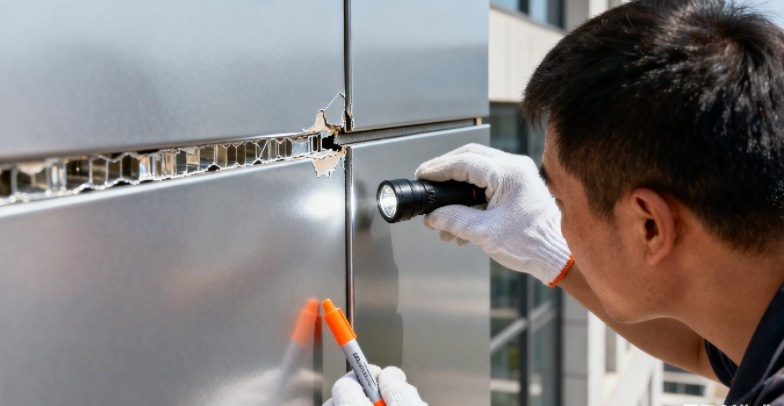
Reference for The Average Service Life of Aluminum Honeycomb Panels
Divided by Usage Scenarios
| Usage Scenarios | Average Service Life | Key Influencing Factors |
| Dry indoor spaces (e.g. office spaces, normal office decor for living rooms at home indoor partitions) | 25-40 years | A stable environment without powerful corrosive agents such as rainwater, ultraviolet rays or salt spray. It is primarily affected by the quality of raw materials and manufacturing processes |
| Indoor humid areas (e.g. ceilings in kitchens, bathrooms and partitions for bathrooms) | 15-25 years | Easy water vapor penetration is based on waterproofing measures and top-quality raw materials; frequency of maintenance can have a significant impact on the life of the product |
| Outdoor general environments (e.g., building exteriors in non-coastal areas, outdoor advertising backgrounds) | 10-20 years | In the presence of ultraviolet rays rainwater, and the alternating low and high temperatures. the quality of coatings and their anti-aging capabilities are major factors that affect the performance of coatings. |
| Outdoor harsh environments (e.g., building curtain walls in coastal areas, outdoor facilities in industrial parks) | 8-15 years | Subjected to temperature and vibration changes; requires high standards for the stability of the structure and resistance to impact Manufacturing processes can have a significant impact |
Divided by Product Quality
High-end aluminum honeycomb panels (adopting primary aluminum with high purity and high-quality honeycomb cores of aluminum with fluorocarbon coatings, as well as modern manufacturing techniques): The life expectancy can last 30 to 40 years inside, 15 years outdoors in all environments and 10 years outdoors in harsh environments.
Mid-range aluminum honeycomb panels (adopting mixed panels made from primary aluminum, a tiny quantity of recycled aluminum regular honeycomb cores made of aluminum coated with polyester, as well as the standard manufacturing procedures) :The lifespan can last 20-30 years inside, 10 years outdoors in all conditions, and 8-12 years outdoors in extreme conditions.
Low-end aluminum honeycomb panels (adopting recycling aluminum panels paper cores, plastic and paper basic coatings (or none) and rough manufacturing techniques): The life span is between 10 and 20 years in indoor environments. 5-10 years outdoors in normal conditions and 3-8 years outside in harsh environments.
Practical Tips to Extend the Lifespan of Aluminum Honeycomb Panels
Purchase Stage
Prioritize primary aluminum components. Verify with the supplier that honeycomb cores and panels are constructed from pure aluminum. Request inspection reports of quality for the product. Avoid products made of recycled materials or mixed-materials to ensure longevity at the source.
Choose the right surface coatings. For outdoor use, or humid indoor areas that have corrosive elements choose the fluorocarbon coated (PVDF) product. For indoor dry environments with no particular specifications Polyester-coated (PE) products may be selected based on budget however, it is important to confirm the thickness of the coating and its quality.
Concentrate on manufacturing processes and brand names. Choose products that are branded with the latest hot-pressing technology, a good reputation and a high level of market recognition. These products adhere to strict manufacturing guidelines, ensuring higher quality and a longer life.
Installation Stage
Choose a professional installation team. Select experienced, skilled and qualified teams. Communicate expectations and standards for installation prior to installation in order to avoid risk from inadequate installation skills.
Control installation details strictly. Make sure the base layer is flat prior to installation and repair any uneven areas. Make sure that panels are secured when installing them, seal joints with a high-quality sealant and apply additional waterproofing to protect against humid outdoor areas.
Conduct inspections following installation. After installation, verify the status of each panel’s installation and seal each one individually. If any issues occur to ensure installation quality.
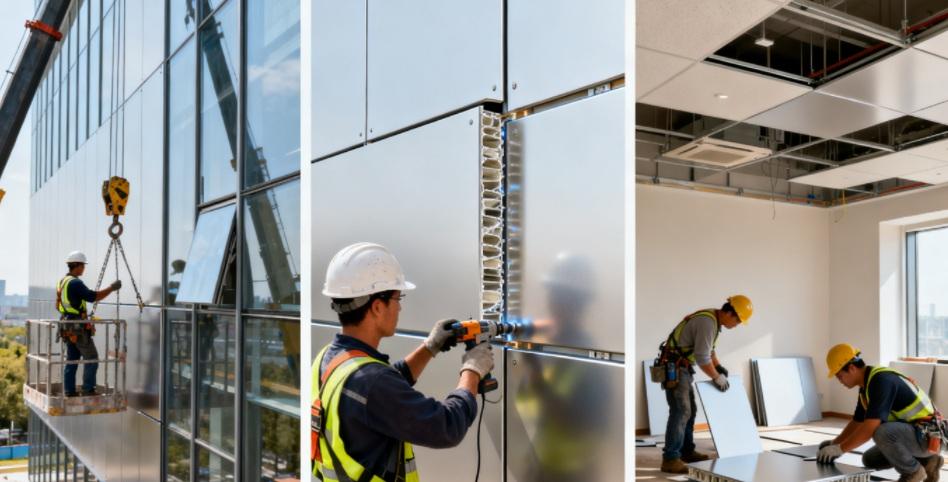
Daily Maintenance Stage
Clean frequently. Wipe the indoor panels using a soft, damp cloth in neutral detergent each 1-3 months to clean stain and dust. Clean outdoor panels once every 1-2 months, and then rinse them with clean water following to keep the coating from corroding due to the residual detergent.
Check the condition of your panel regularly. Conduct thorough inspections every 6-12 months. Focus on any damage to coatings, old and peeling sealant for joints and deformation of the panel. Make any necessary repairs as soon as you notice.
Get targeted protection. Apply UV-blocking protection on outdoor panels annually to increase the UV resistance. Examine outdoor items in areas near the coast for erosion by salt water every six months and carry out anti-corrosion treatments when needed. For indoor products in humid areas, it is recommended to regularly inspect the waterproofing measures to avoid water vapor from entering.
Abnormal Handling
To fix coating damages: Clean it up using the identical kind of coating as soon as there is a localized damage to avoid aluminum alloy substrate oxidation due to exposure.
To replace sealant that is old, replace the peeling or cracked joint sealant with a high-quality one and seal it immediately to avoid dust and water vapor penetration.
For minor deformations: identify the root cause first. Adjust the fasteners if there are installation problems; fix with the help of a professional if caused by external force to prevent aggravating.
Summary
The life span of aluminum honeycomb panels is influenced by the materials used, their quality, environments, manufacturing processes as well as installation methods and routine maintenance. There are significant variations in the various scenarios and quality of the products. A scientific selection of top-quality products, professional-standardized setup, frequent maintenance, and quick handling of issues will prolong the life of your panels increase the value of use and lower repair and maintenance costs.Need to pick aluminum honeycomb panels? Chongqing Huigong, a trusted aluminum honeycomb panel manufacturer, is here for you.

